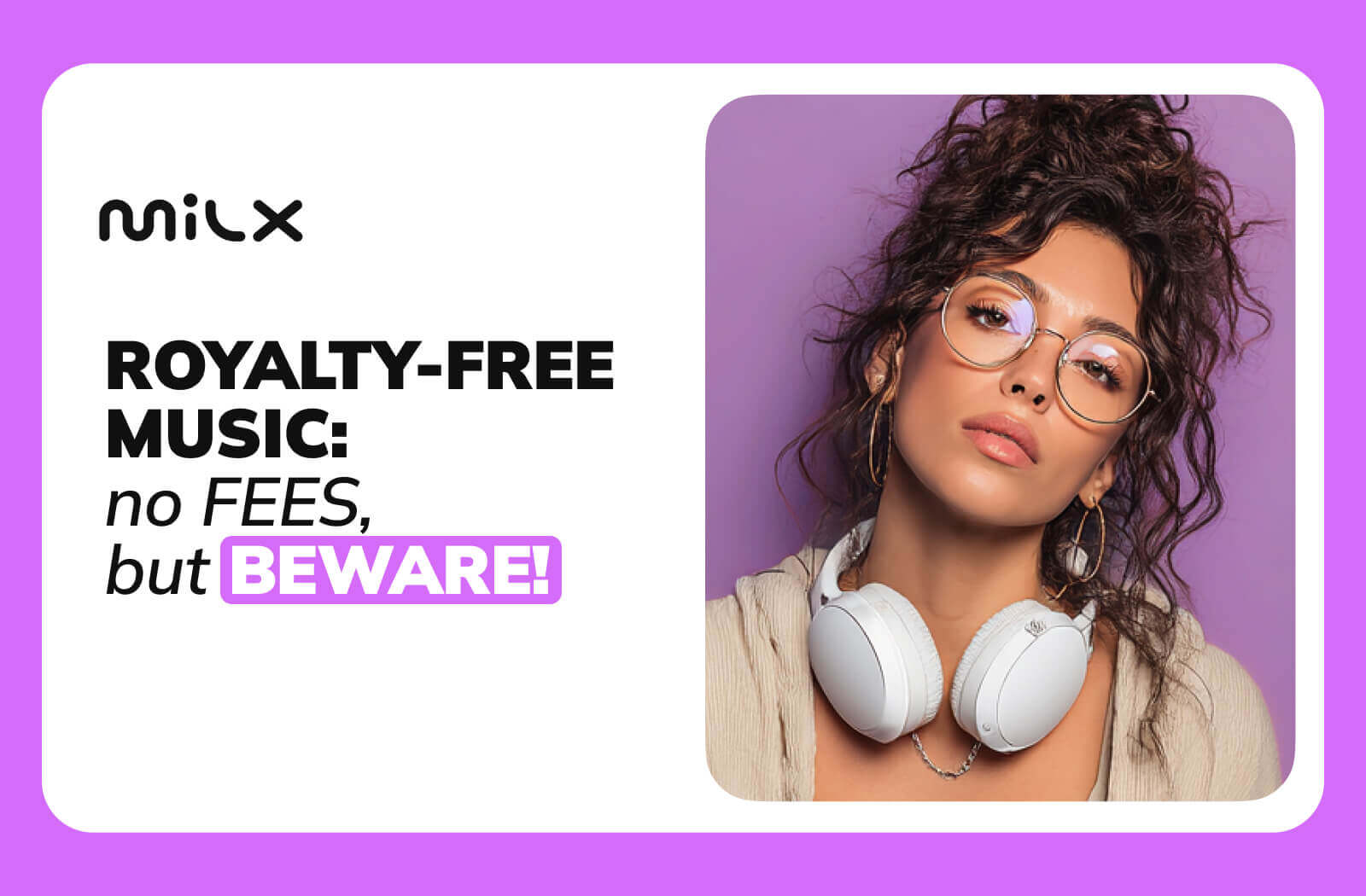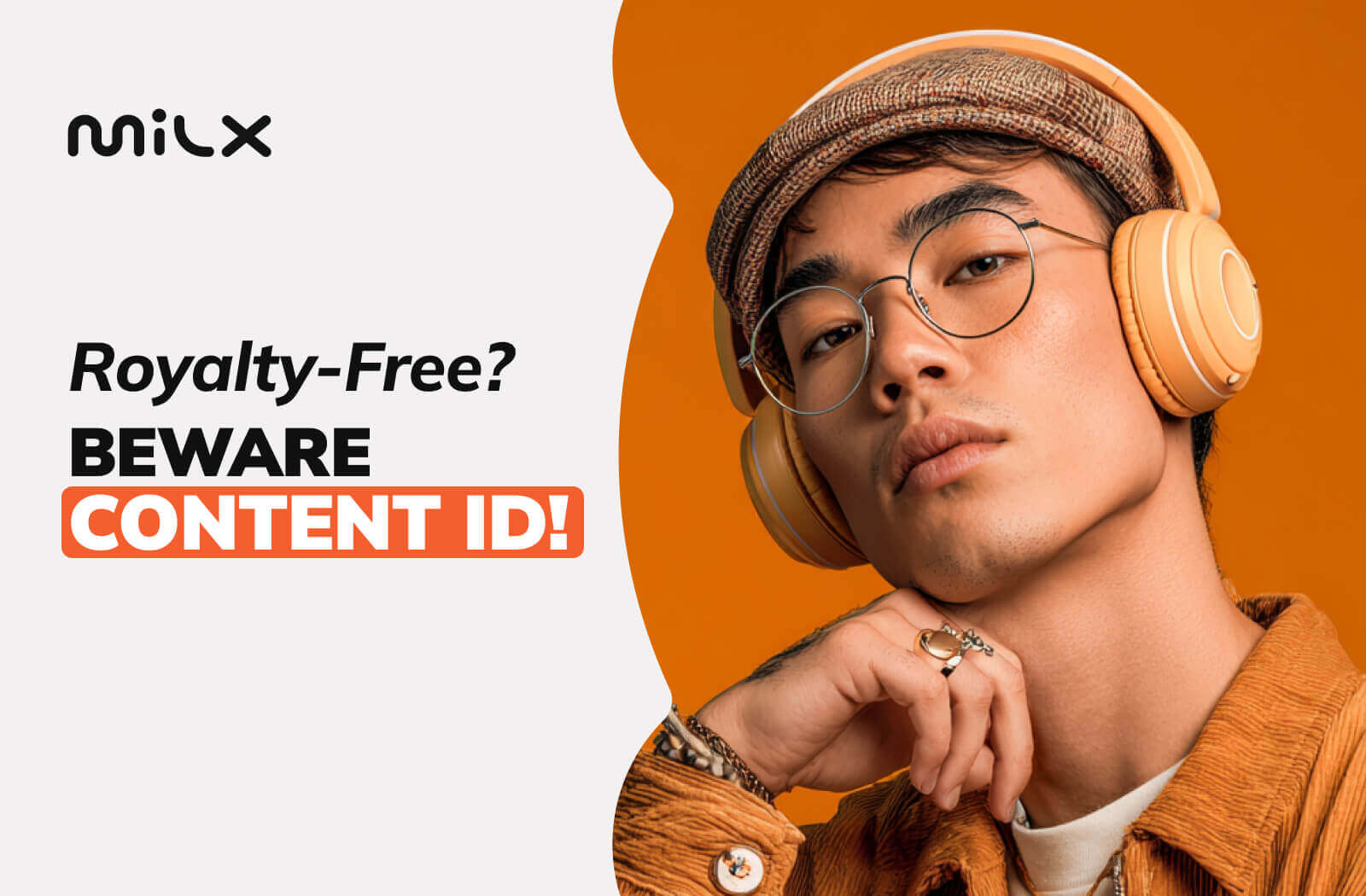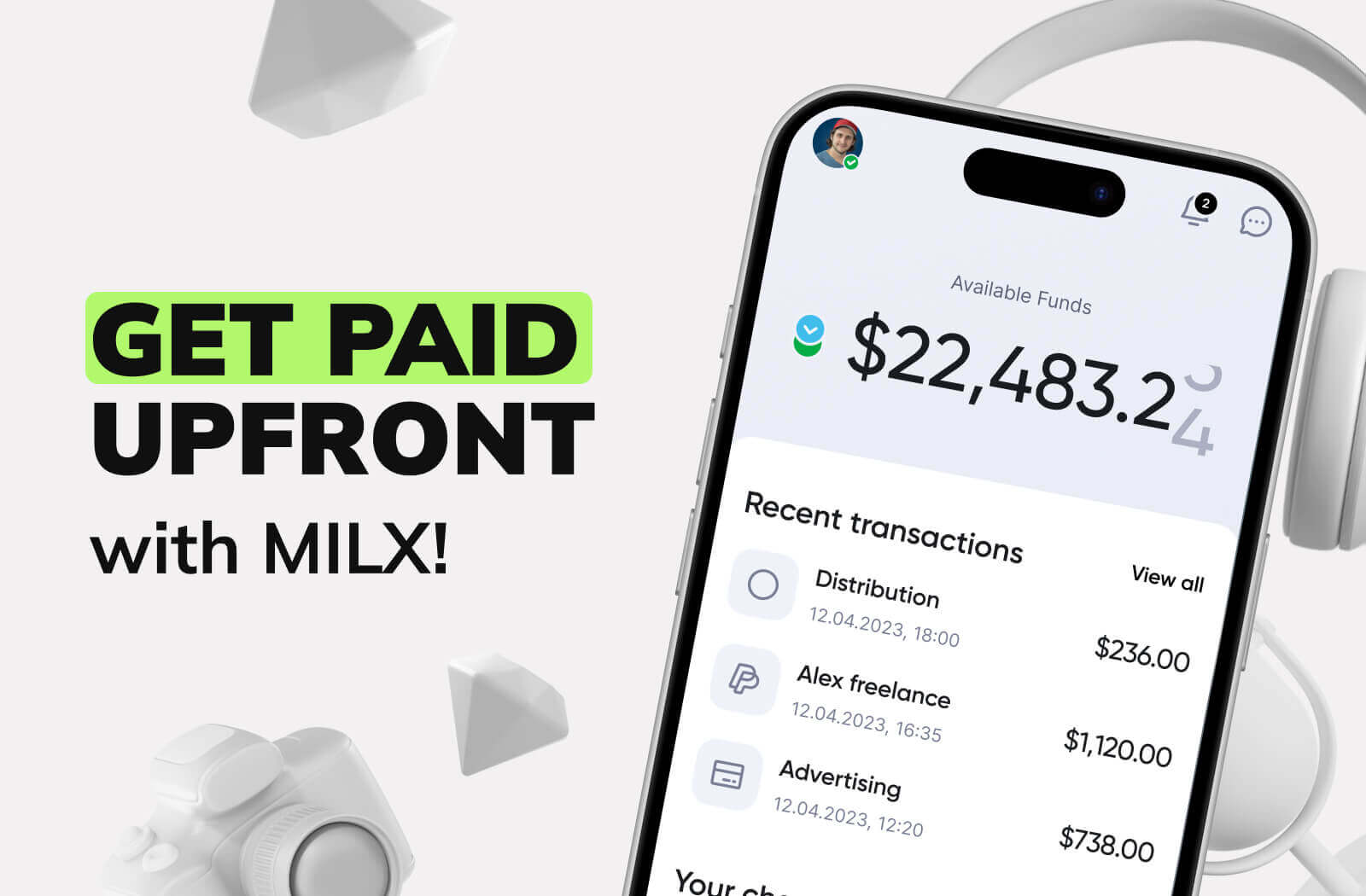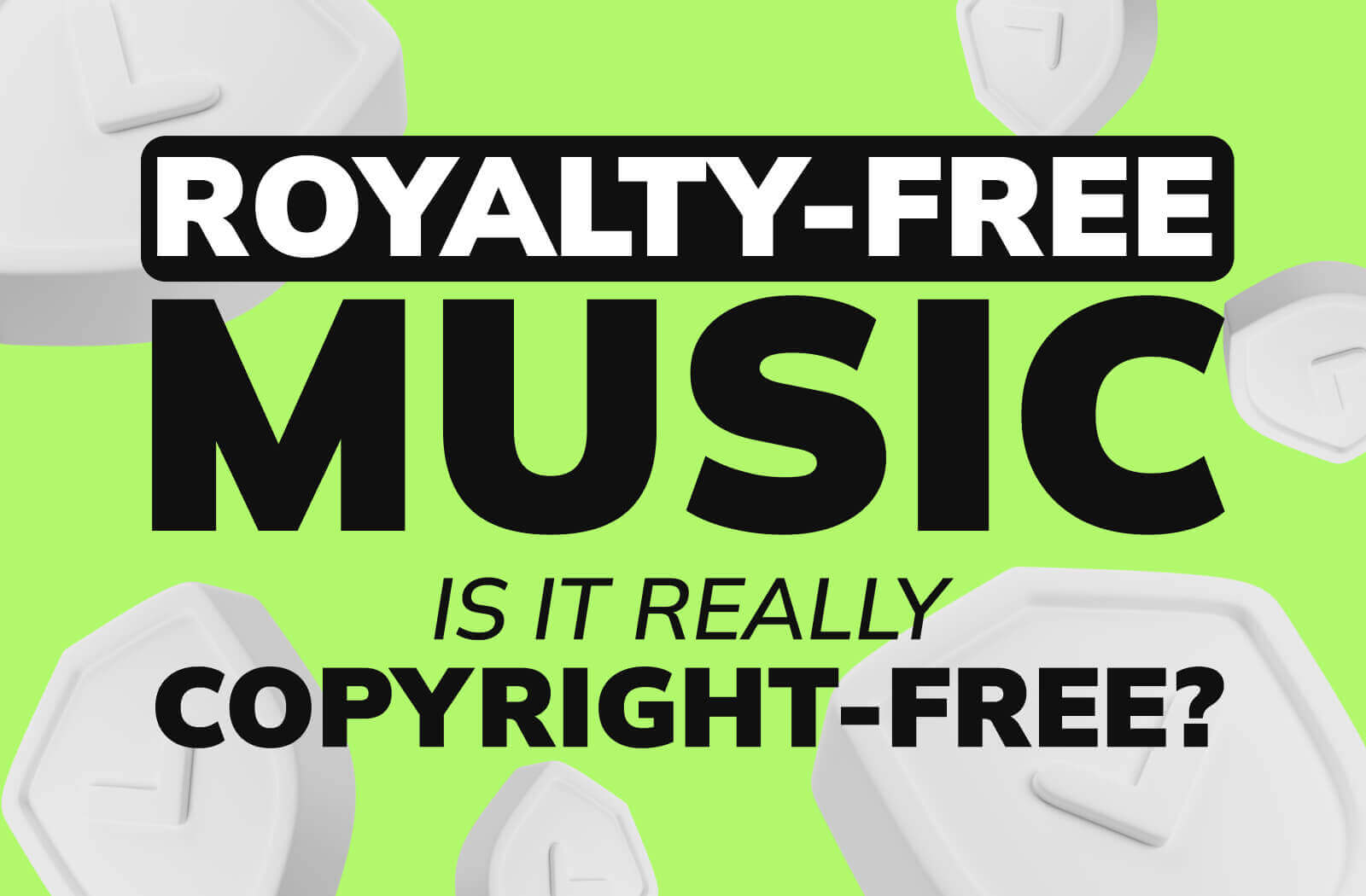Royalty-free music seems like the ideal choice for creators, right? The promise of no royalties sounds like the perfect solution. But it doesn't always protect you from copyright claims.
You might save on fees, but there are still potential pitfalls. Let’s dive in and explore why!
What is Royalty-Free Music?
“Royalty-free” sounds like it should come with a big, shiny guarantee: no fees, no hassles.
But that’s not exactly the case. It simply means you don’t have to pay a royalty every time you use the track.
However, that doesn’t automatically protect you from copyright issues.
While you avoid ongoing royalty payments, many royalty-free tracks still have restrictions.
These can include how you can use the music, where it can be played, or whether you’re allowed to modify it. For example, some tracks may only be cleared for non-commercial use.
Before you upload anything, it’s crucial to check the license terms. Don’t assume that just because a track is labeled “royalty-free,” you’re in the clear.
If you plan to use music for commercial projects or modify it, make sure you’re fully covered.
👉 Learn more about what royalty-free music is and how it works.

Royalty-Free vs. Copyright-Free Music
What is the difference between royalty-free and copyright-free music?
Royalty-free music means you don’t have to pay royalties every time you use it. But the copyright still belongs to the creator or company. They can still control how the music is used.
On the other hand, copyright-free music means the creator has given up all rights to the track. You can use it freely without worrying about copyright claims.
Understanding this difference is crucial.
Using royalty-free music for YouTube or podcasts won’t protect you if the music is still under copyright.
Always double-check the licensing details before you hit "upload"!
Receive Payment Before the Views Arrive
Unlock up to 6 months of future YouTube earnings with MilX Active Funds today. Start using MilX for free and take control of your income on your own terms.
Common Pitfalls Creators Miss
A big mistake many creators make is confusing "royalty-free" with "copyright-free."
Just because a track is labeled as "royalty-free" doesn’t mean it’s free from copyright. The music might still be protected, and the creator or company can hold the rights.
For example, platforms like Epidemic Sound offer a vast collection of royalty-free music, but they come with specific rules. You can’t just grab a track and use it however you like.
The music might be royalty-free in terms of payments, but it could still have limitations on how, where, or when you can use it.
If you don’t fully understand the terms of use, you might end up with a copyright claim.
So, always read the fine print. It’s better to be safe than sorry!
Why Content ID Still Causes Problems
Even if you’re using "royalty-free" music, platforms like YouTube can still cause headaches with their Content ID system.
Content ID scans every video to check for copyrighted material. If your track is registered with Content ID, even royalty-free music can get flagged.
For example, YouTube’s own royalty-free music library sounds like a safe bet.
But, if the track is in the Content ID system, it can still trigger a claim. It’s not as smooth sailing as it seems.
This means that even tracks you think are completely safe could still face a copyright claim.
Always be aware that Content ID doesn’t always distinguish between royalty-free and copyrighted music.
So, be cautious and double-check the music’s status before uploading.

How to Avoid Copyright Issues
The best way to avoid copyright problems? Check the license, always.
Whether you're using free royalty-free music or royalty-free music for videos, it’s essential to ensure the license allows for your specific use.
Choose platforms that provide clear, reliable licenses.
For example, sites like Epidemic Sound and other top royalty-free music libraries make it easier to stay on the safe side.
These platforms offer transparency, so you can confidently use their tracks without the risk of copyright claims. Always verify the terms before you use any music!
How to Safeguard Your Licenses
The key to protecting your rights is to keep a record of your licenses.
Whether you’re using royalty-free stock music or royalty-free background music, always save the proof of purchase or license. This way, if a copyright claim comes your way, you’ll have the evidence to show you’re in the clear.
Platforms like YouTube’s royalty-free music library even offer downloadable license certificates. Be sure to download and store them safely.
Having this documentation on hand will save you time and trouble if you ever need to defend your use of the track.
👉 Discover more about top royalty-free music libraries.

Get Access to Your Earnings with MilX
“Royalty-free” music is a great tool for creators, but it’s not a foolproof way to avoid copyright problems.
Always double-check the licensing terms and keep a solid record of your music usage. When you choose trusted platforms and fully understand the rules, you can enjoy the benefits of royalty-free music without the risk of copyright claims.
Don’t let copyright issues drain your revenue. And when you have one, how can you cash out upfront?
MilX takes it a step further by providing access to future YouTube income with MilX Active Funds, which get paid upfront for up to six months of future earnings.
Plus, you can withdraw your money instantly in over 40 currencies, using more than 10 payment methods, including crypto.
Need flexibility? Withdraw your YouTube earnings anytime to your bank account, card, e-wallet, or crypto wallet, with low fees.
Running a growing channel? Use your future earnings to invest in gear, ads, or new content without any delays.
MilX is fast, secure, and designed for creators who want financial freedom without the friction.
Start for free and take your monetization to the next level with MilX!

